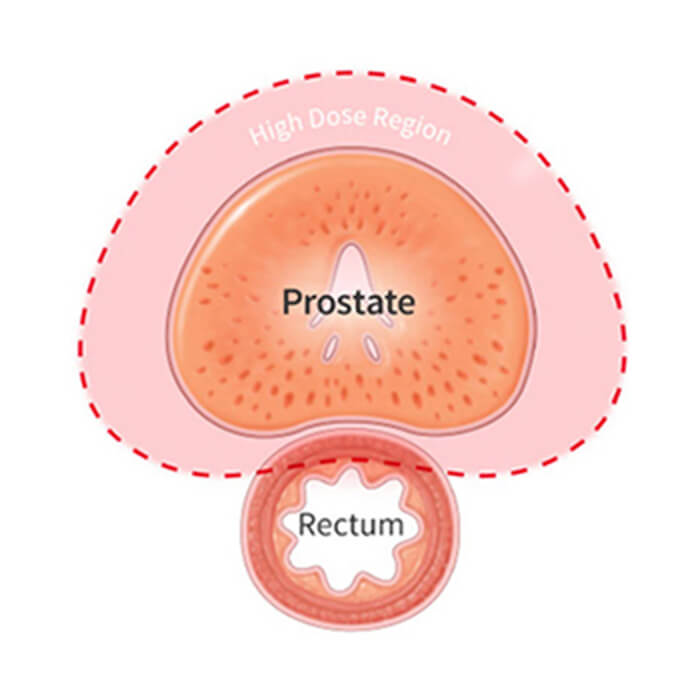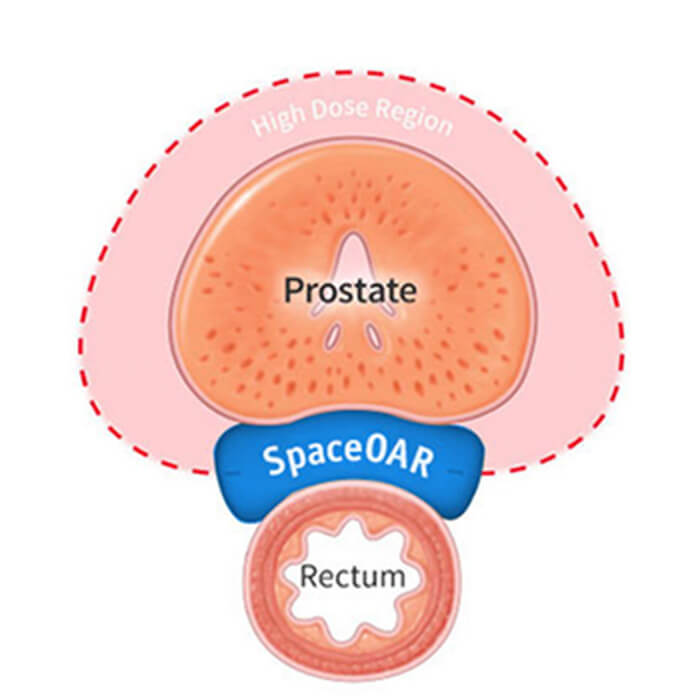What is SpaceOAR Hydrogel?
SpaceOAR Hydrogel is a polyethylene glycol (PEG) based hydrogel clinically shown to minimize urinary, sexual, and bowel side effects and protect quality of life for prostate cancer patients undergoing radiation therapy.1–3
How to get started with SpaceOAR Hydrogel
If you need help or have questions along the way, give us a call at (781) 549-9539.
Real patients, real stories
Hear from prostate cancer survivors who have benefited from SpaceOAR Hydrogel as well as the physicians who provide it to their patients.
Dr. Siegel’s story: patient and urologist
Henry’s story
Alan’s story
Have more questions? We can help.
Sign up to receive more information about SpaceOAR Hydrogel. Our patient education team can provide you with details about how SpaceOAR Hydrogel works, what to ask your doctor and how to find a doctor in your area.
References
- Mariados N, Sylvester J, Shah D, et al. Hydrogel spacer prospective multicenter randomized controlled pivotal trial: Dosimetric and clinical effects of perirectal spacer application in men undergoing prostate image guided intensity modulated radiation therapy. Int J Radiat Oncol Biol Phys. 2015 Aug 1;92(5):971–7.
- Karsh LI, Gross ET, Pieczonka CM, et al. Absorbable hydrogel spacer use in prostate radiotherapy: A comprehensive review of phase 3 clinical trial published data. Urology. 2018 May;115:39–44.
- Hamstra DA, Mariados N, Sylvester J, et al. Continued benefit to rectal separation for prostate radiation therapy: Final results of a phase III trial. Int J Radiat Oncol Biol Phys. 2017 Apr 1;97(5):976–85.
Caution: U.S. Federal law restricts this device to sale by or on the order of a physician.
Results from case studies are not necessarily predictive of results in other cases. Results in other cases may vary.
SpaceOAR Hydrogel is intended to temporarily move the rectal wall away from the prostate during the course of radiotherapy treatment for prostate cancer, and in creating this space it is the intent of SpaceOAR Hydrogel to reduce the radiation dose affecting the rectum.
SpaceOAR Hydrogel contains polyethylene glycol (PEG). As with any medical treatment, there are some risks involved with the use of SpaceOAR Hydrogel. Potential complications associated with SpaceOAR Hydrogel include, but are not limited to: pain associated with injection, pain or discomfort from the hydrogel, site inflammation, infection (including abscess), inability to urinate, urgent need to urinate, constipation, rectal muscle spasm, damage to lining of rectum, ulcers, fistula (a hole between rectum and bladder, urethra, or skin below the scrotum), perforation (hole in prostate, bladder, urethra, rectum), necrosis (dead tissue), allergic reaction (local reaction or more severe reaction, such as anaphylaxis), embolism (blood vessel blockage is possible and may happen outside of the pelvis, potentially impacting vital organs or legs), fainting, and bleeding. Please talk to your doctor about the risks and benefits related to using SpaceOAR Hydrogel. If one or more of these complications occur, you may need medical treatment or surgery.
All images are the property of Boston Scientific.



